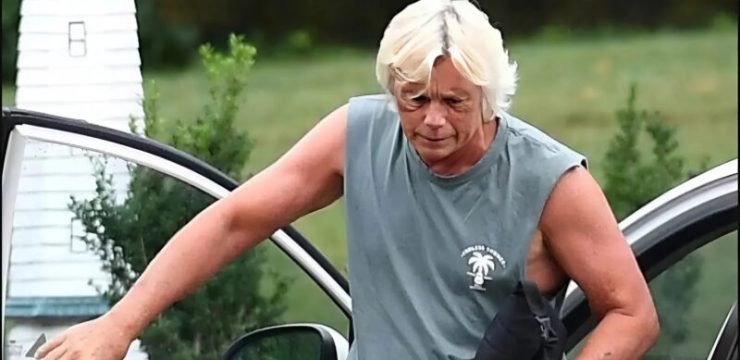She sits behind cold, unyielding metal bars — barely a teenager, her life halted before it ever truly began. Her only crime was being in the wrong place at the wrong time, caught in a system that too often equates punishment with justice. In a country that proudly calls itself the land of freedom and opportunity, there lies a painful contradiction: children, some as young as twelve, are sentenced to spend the rest of their lives in prison without any chance of parole.
The United States, long celebrated as a symbol of liberty, holds one of the largest prison populations in the world. Yet hidden within those statistics are stories that challenge belief — at least seventy-nine children under the age of fourteen are serving life sentences with no possibility of release. This data, reported by Human Rights Watch and the Equal Justice Initiative, has reignited a national debate about what true justice means in a society that claims to believe in redemption.

Behind each statistic is a story filled with loss, trauma, and poverty. Many of these young offenders grew up in homes where chaos was the norm — environments marked by abuse, neglect, and constant struggle. Education was often out of reach, and survival took precedence over everything else. Some committed terrible acts; others were simply bystanders or victims of circumstance, dragged into tragedies they could neither control nor comprehend. Each case is a heartbreaking reminder of how swiftly childhood can vanish in a system that values punishment over understanding.
One of the most striking examples is the case of Lionel Tate. In 1999, at just twelve years old, Tate was convicted of killing a six-year-old girl during what he described as a wrestling game gone wrong. Though he insisted it was an accident, the court sentenced him to life in prison without parole, making him the youngest American ever to receive such a sentence. The public was outraged. Advocates argued that no twelve-year-old could possibly grasp the full consequences of their actions the way an adult could. After years of appeals and mounting public pressure, Tate’s sentence was reduced. But his case became a turning point, forcing America to confront a difficult question: should children ever be treated and punished as adults?
This debate reaches the very heart of morality, science, and justice. Experts in child psychology agree that young brains are still developing, especially in areas that control decision-making, impulse regulation, and moral reasoning. “Sentencing a child to life in prison violates the most basic principles of justice and humanity,” said Juan Méndez, former United Nations Special Rapporteur on Torture. “Children are still growing — emotionally, mentally, and morally. To condemn them to die in prison is to deny the human capacity for change.”
Despite such powerful statements, many states remain firm in their stance. Florida, Michigan, and Pennsylvania lead the nation in the number of minors serving life sentences. Lawmakers and prosecutors in these states argue that some crimes are so severe that age should not protect the offender from the harshest possible penalty. To them, justice for victims and public safety must outweigh calls for rehabilitation.
However, progress has begun to take shape over the past decade. In 2012, the U.S. Supreme Court ruled that mandatory life sentences without parole for juveniles were unconstitutional, recognizing that children’s capacity for change sets them apart from adults. In 2016, the Court extended that decision retroactively, allowing those already serving such sentences the chance to have their cases reviewed. Yet even with these rulings, hundreds of young inmates remain trapped behind bars, waiting years for their cases to be reconsidered.
Civil rights advocates like Bryan Stevenson, founder of the Equal Justice Initiative, have continued to fight for change. “Childhood should be a time for learning and redemption, not a life sentence,” Stevenson has said. “When we decide a child can never change, we abandon both science and compassion.” His tireless work, which inspired the acclaimed film Just Mercy, has drawn renewed attention to how deeply racial and economic inequality influence juvenile sentencing. Studies reveal that children of color, particularly Black boys, are far more likely to receive life sentences than their white counterparts for similar offenses.
Advocates are now pushing for a system grounded in restorative justice — one that acknowledges harm while promoting healing rather than lifelong punishment. Programs centered on education, therapy, and community reintegration have proven effective in helping former juvenile offenders rebuild their lives. These initiatives don’t erase accountability; instead, they embrace the belief that transformation is possible when society gives people a second chance.
Opponents of extreme juvenile sentencing argue that redemption isn’t just a personal right but a societal necessity. A justice system that refuses to believe in rehabilitation sends a dangerous message — that some lives are beyond saving. As Stevenson often reminds audiences, “If we give up on our children, we give up on our future.”
The issue forces America to look inward and ask difficult questions. What does it mean to be a just nation? Is justice defined by retribution or restoration? How a country treats its most vulnerable — especially children who made mistakes before fully understanding the weight of their actions — reveals its true moral character.
Across the nation, countless teenagers have spent more years behind bars than they ever lived in freedom. Some were barely old enough to drive or attend high school when they were sentenced. Inside prison walls, many have found faith, pursued education, and mentored others — signs that the capacity for growth and change endures even in confinement. Yet for far too many, the system offers no light beyond the bars, no opportunity for redemption.
As lawmakers and citizens grapple with this moral crisis, one truth becomes undeniable: justice without mercy is not justice at all. To build a fairer system, America must find the courage to look beyond punishment and embrace the possibility of renewal. Reform is not about excusing wrongdoing — it’s about acknowledging that no child is beyond hope.
The plight of these seventy-nine children stands as a haunting reflection of America’s contradictions. The same nation that celebrates liberty and second chances also condemns its youngest citizens to lives without freedom or forgiveness. Each story forces us to confront an uncomfortable truth: a country that cannot forgive its children cannot truly call itself free.
So the next time we hear the phrase “land of the free,” let us remember those young faces staring through the bars — not as criminals, but as reminders of what justice could be if compassion ever outweighed condemnation.
If this story moved you, share it with your family and friends. Change begins with awareness, and awareness begins with stories like these — stories that remind us that even behind the strongest walls, hope can still breathe.





